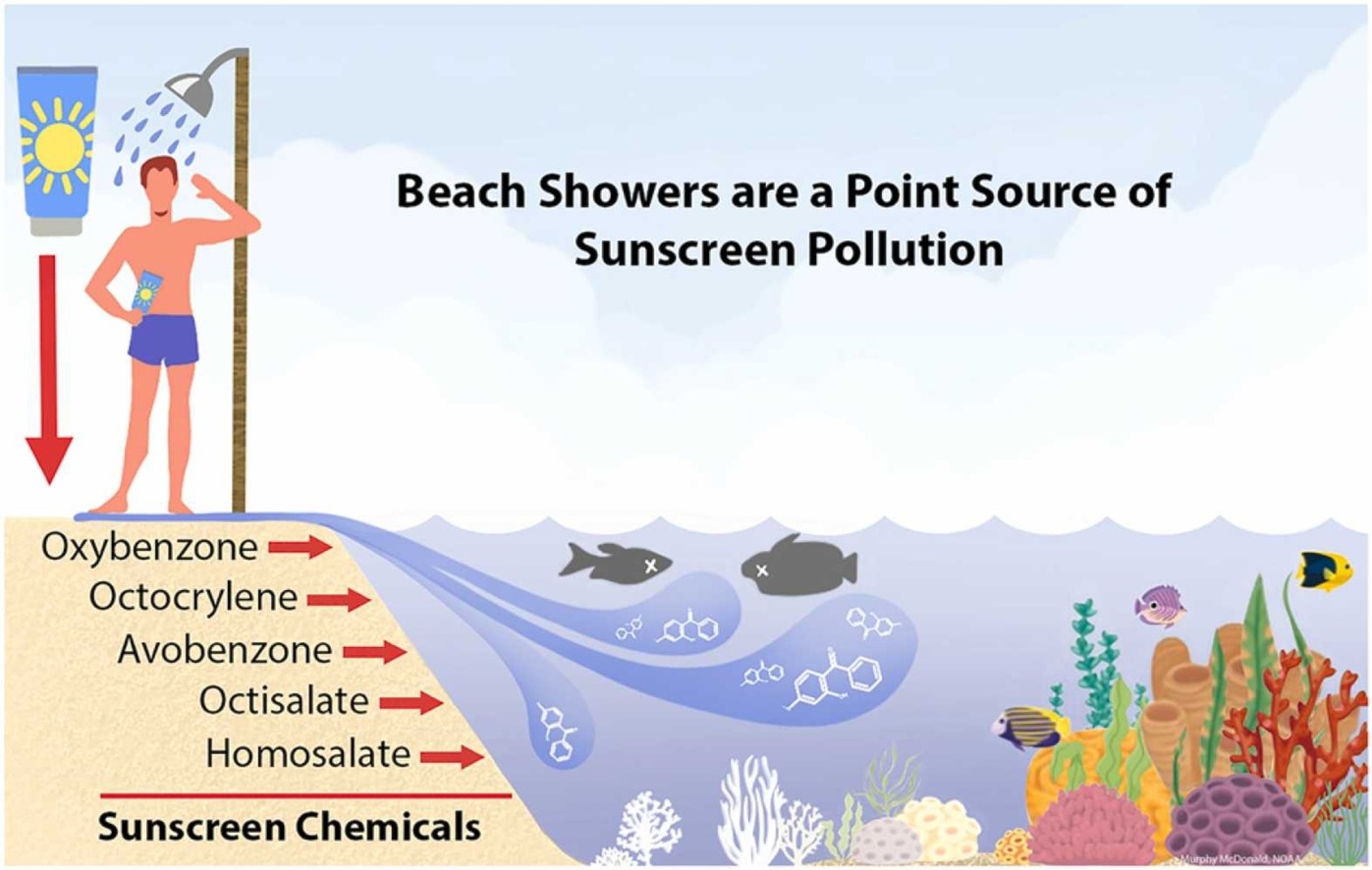
New research conducted in Hawaii shows that sands in beach shower runoff streams contain high enough concentrations of sunscreen chemicals to be considered point sources of pollution for shoreline marine habitats and nearby coral reefs.
While at the beach, beach goers will apply sunscreen, and then use the beach park’s shower amenity. What sunscreen doesn’t come off a swimmer’s body when swimming can be washed off at the beach shower. Unfortunately, a number of these showers do not drain to the municipal sewer system, but instead drain right onto the beach and back into coastal waters.
In addition to shedding light on this emerging concern for Hawaiian beaches, the paper also presents mitigation options and recommendations to reduce the contaminant loads associated with these showers to minimize damage to their marine resources.
One option is to regulate the sunscreen chemicals that are threatening the environment. Maui County Council Members Kelly King and Tamara Paltin led the effort for Maui to pass 2021 Ordinance #5306, which bans the sale, distribution and use of sunscreen containing non-FDA-approved petrochemical sunscreens, such as oxybenzone, octocrylene, and homosalate. Only FDA-approved mineral sunscreens can be used and sold in Maui beginning October 1, 2022. Last month, Hawaii County passed a similar law, allowing the sale of only mineral sunscreens.
The information gleaned from this research will help to inform local tourism and infrastructure management, and also contribute important data to the larger discussion on the hazards of sunscreen pollution to coral reefs globally.
Citation: C.A. Downs, et al. (2022). Beach showers as sources of contamination for sunscreen pollution in marine protected areas and areas of intensive beach tourism in Hawaii, U.S.A. Journal of Hazardous Materials. https://doi.org/10.1016/j.jhazmat.2022.129546
